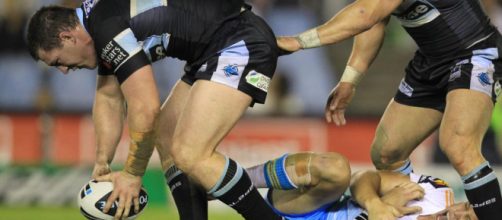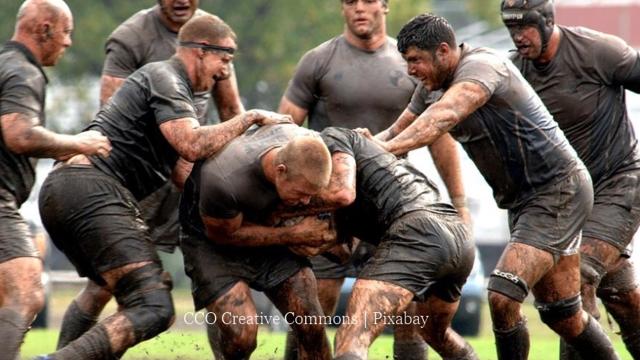Over the past few seasons, play-acting has caused concern for many supporters about the direction in which Rugby League is heading. The infiltration of so-called football tactics - wriggling around on the floor, trying to earn a penalty despite minimal contact - is becoming an increasing problem. The act of cheating - which is undoubtedly the correct label for such actions - needs to be nipped in the bud and quickly. This inevitably means that the refereeing hierarchy need to come up with some sort of retrospective punishment for players that are trying to con the men in the middle.
Referees have it tough
Referees already have a very tough job to do and it is not made any easier by burly Rugby League players throwing themselves on the floor and gesticulating towards the referee for a penalty. This pressure is compounded by the thousands of spectators baying for the referee's blood and shouting for as many infringements as possible. Inevitably therefore, play-acting tactics more often than not work and it is plaguing the game.
Whilst referees are expected to have eyes in the front, side and back of their heads, it is nigh on impossible for referees to judge every single ruck correctly - especially with regards to the amount of things to look out for in the game - and players are intentionally going out of their way to make their jobs harder.
No fan wants to see cheating - it's not only unsportsmanlike, but it also drags the quality of games down with an increasing number of stoppages in play.
Where has it come from?
Wind the clock back around five years and there was little evidence of such tactics going on. The blame has to lie entirely with coaches; if the coach of a team stamps out any unsportsmanlike behaviour then the players are likely to play the game as it should be played - honestly.
At the beginning of April, Wigan boss Shaun Wane stated that he would consider dropping any of his players if they exaggerated a penalty in an attempt to stop a try being scored - his focus was, undeniably, on the controversial obstruction ruling that has seen perfectly good tries wiped off because a defender has made the most of an attacking dummy-runner coming into the defensive line.
Well, Willie Isa - albeit not to stop a try being scored - "fell over" Adam Milner - who was lying on the floor behind the play-the-ball - in Castleford's game against the Warriors last Friday. Isa could have clearly gathered the ball without needing to tread on Milner and thus pretend to slip, but the formidable and physical forward went down like a sack of potatoes and referee Robert Hicks was conned into giving Wigan a penalty. Will Shaun Wane be as ruthless as he said he would be and drop Isa for cheating?
Time to stamp it out
The act of throwing the ball at a defender that hasn't rolled away from the tackle has also been a very controversial topic in recent seasons - though this has seemingly being stamped out of the game even if Catalans' Michael McIlorum won a penalty for doing the exact same thing earlier on in the season.
Likewise, keeping the ball in scrum whilst the opposition breaks is a sneaky tactic and is rewarded with a differential penalty with more and more teams adopting such a ploy in order to gain easy ground.
However, both of these strategies pale into insignificance when compared to the childlike play-acting in the ruck. Rugby League supporters just want to watch free-flowing rugby, not a stop-start game that has both sets of fans frustrated. The ruck is where most penalties are won or conceded, but that doesn't mean players have to adopt cheap and dishonest tactics to con the referee.



